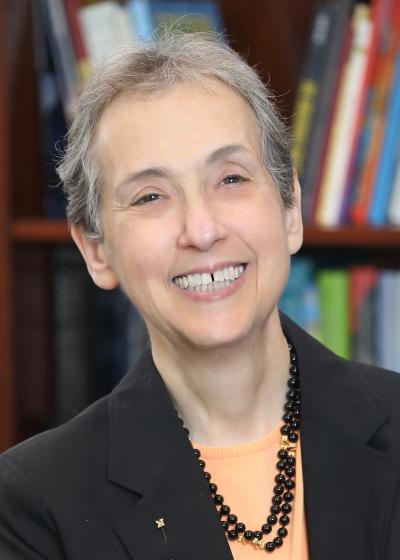From the Deputy Director for Intramural Research
Welcoming Colleagues: The Honor is Ours
BY NINA F. SCHOR, DDIR

This is a challenging piece to write. Not because the words are hard to find. (While I cannot dance or sew to save my life, words and music have always come effortlessly to me.) No, this is difficult because I must write of hurt inflicted on many of us in our NIH community.
The hurt I speak of comes from condescending and belittling remarks, however unintentional they may be. I myself have been affected by these with some regularity since coming to the NIH. If I feel hurt sometimes—I, someone who trained and developed most of my career in an unforgiving era in which making women and people of color feel inadequate and unwelcome was a cottage industry and who now has the courage and career of her convictions—I can only imagine how those at early stages of their careers are made to feel.
Each year, we are honored and fortunate to have truly outstanding, creative, and passionate researchers join our community. Some come from within the NIH, while others join us from training, clinical, or investigative positions in other institutions around the world. Too often in the past six years, I have heard someone say to a newcomer to the NIH, “You are so lucky to be here. There is no place else in the world where you could do the kind and quality of science we do here.”
Well, proud as we may be of the NIH, there are many premier research facilities across the globe. Brilliant minds do great research there, and the NIH Intramural Research Program can learn from them. Times have changed. The NIH now is blessed by our success in both training and funding leaders who built remarkable research programs around the United States and world. True, medical schools in the 1960s and '70s were apprenticeship enterprises, training clinicians in the art and science of diagnosis and treatment; but now academic medical centers are veritable hotbeds of outstanding research and biomedical product development.
In the decades while many at the NIH were steely focused on the exceptional work they and others were doing within our campuses and were not watching beyond our borders, these academic medical centers were accruing endowments, creating partnerships with industry, garnering extramural funding from NIH, and recruiting the wonderful people we and they themselves train. They have grown truly remarkable research communities that honestly do things that the IRP is not equipped or meant to do. They represent an opportunity for partnership and a synergistic international community with which for us to engage.
So, imagine how it might feel to have spent more than a decade or two building skills, developing a career of substance, only to come to the NIH to have people make you feel like you were just born on the day you got your PIV card. I have commented to some that I must have been hired without anyone reading my CV! We must make an effort to say, “We are so lucky to have gotten you to come here” instead of ascribing to the luck of our recruits what was born of hard work and magnificent opportunity afforded them in non-governmental sectors.
My own experience has made me certain that many at the NIH think this wonderful institution is so unique, that nothing I experienced or did or earned in my 32 years in academia, just shy of 30 of them engaged in bench research funded by the NIH, provided me with skills and knowledge applicable to leadership here. (To be more candid than perhaps I should, if one more person starts a sentence with, “You don’t know this yet, but…” or “You’re too new to have developed trusting relationships with people here…,” I think I shall totally lose my usually calm demeanor!)
I am seasoned; I am experienced; I am very tough and tend to view everything through the lens of humor. And even I have found the NIH hard to like, despite its being easy to love. We must attract the best and the brightest and the most collegial and collaborative whoever and from wherever they may be. We must make them understand that we are so excited to welcome them to NIH because of who they are and where they have been before they got here.
As we approach the close of another impactful year at NIH, let us applaud the richness of the scientific community all around the world and leverage this diversity of strengths for the advancement of science and health!
This page was last updated on Monday, November 6, 2023
